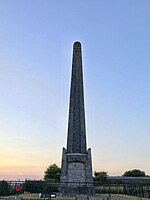Southwick, Hampshire
City of WinchesterFormer civil parishes in HampshireVillages in Hampshire

Southwick is a village and former civil parish, now in the parish of Southwick and Widley, in the Winchester district, in Hampshire, England. 1 mile (1.6 km) north of the Portsmouth boundary measured from Portsea Island. Homes and farms in the village are influenced by the style of the Middle Ages apart from Church Lodge.
Excerpt from the Wikipedia article Southwick, Hampshire (License: CC BY-SA 3.0, Authors, Images).Southwick, Hampshire
North Road West, Winchester Southwick and Widley
Geographical coordinates (GPS) Address Nearby Places Show on map
Geographical coordinates (GPS)
| Latitude | Longitude |
|---|---|
| N 50.874 ° | E -1.112 ° |
Address
North Road West
PO17 6HE Winchester, Southwick and Widley
England, United Kingdom
Open on Google Maps







